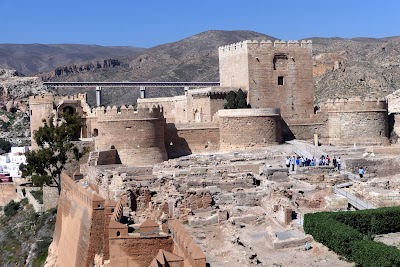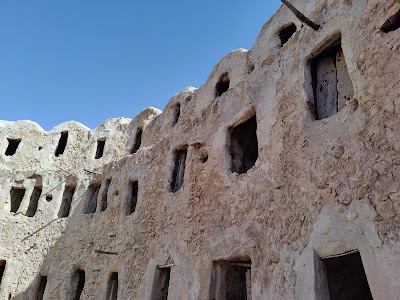Qasr al-Haj Fort (حصن قصر الحاج)
Overview
Introduction to Qasr al-Haj Fort
Nestled in the picturesque Wadi al Shatii District of Libya, the Qasr al-Haj Fort (حصن قصر الحاج) stands as a testament to the rich historical tapestry of the region. This impressive fortification, which dates back to the 18th century, was built during the reign of the Ottoman Empire and serves as a remarkable example of military architecture of the time. The fort's strategic location and robust design reflect the significance of Wadi al Shatii as a vital crossroads for trade and military activities in the Sahara.
Architectural Features
The Qasr al-Haj Fort is characterized by its imposing structure, featuring thick stone walls that have withstood the test of time. As you approach the fort, you'll notice its distinctive defensive towers, which were once used to observe and repel any potential threats. The intricate craftsmanship can be seen in the arches and battlements that adorn the exterior, showcasing the artistic flair of the era. Visitors will appreciate the blend of practicality and aesthetics that exemplify the fort’s design, making it a perfect subject for photography and exploration.
Historical Significance
The fort is not just an architectural marvel; it is steeped in history. Originally built to defend against rival tribes and colonial forces, Qasr al-Haj has witnessed various historical events that shaped the region. It served as a military outpost, a refuge during conflicts, and even a center for local governance. Today, it offers a glimpse into the past, allowing travelers to understand the historical dynamics of Libya, including the influences of the Ottoman Empire and the local Berber culture.
Exploring the Surroundings
Surrounding the Qasr al-Haj Fort is the stunning landscape of Wadi al Shatii, known for its lush oases and towering mountains. The area is rich in natural beauty, providing an idyllic setting for hiking, picnicking, or simply enjoying the serene atmosphere. Adventurous travelers can explore nearby hiking trails that lead to breathtaking vistas, while those seeking relaxation can enjoy the tranquility of the palm groves and flowing watercourses. This combination of history and nature makes Qasr al-Haj a must-visit destination.
Visiting Tips
For foreign travelers, visiting Qasr al-Haj Fort offers a unique opportunity to immerse yourself in Libyan culture and history. When planning your trip, consider traveling during the cooler months, from October to April, to fully enjoy the outdoor experiences the region has to offer. It’s advisable to engage a local guide to enrich your visit with stories and insights about the fort and its history. Additionally, be sure to respect local customs and traditions, as this will enhance your experience and foster goodwill with the local community.
Conclusion
In conclusion, Qasr al-Haj Fort is not only an architectural wonder but also a historical landmark that embodies the spirit of Libya’s past. As you wander through its ancient walls, you'll feel the echoes of history and the stories of the people who once lived and fought here. Whether you are a history buff, an architecture enthusiast, or simply a traveler seeking unique experiences, a visit to Qasr al-Haj will undoubtedly leave a lasting impression.






